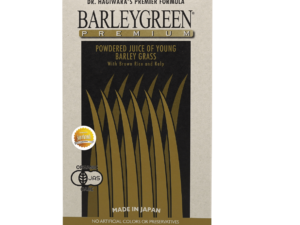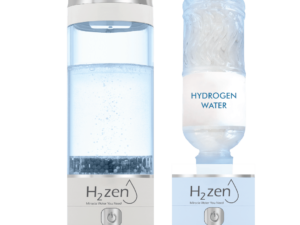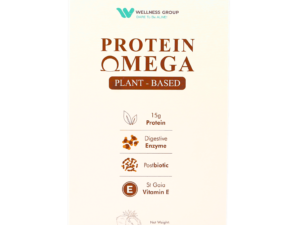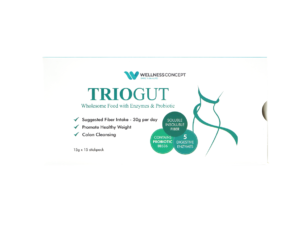Could the secret to a healthier liver lie in your gut? This surprising connection between two seemingly unrelated organs is reshaping how scientists approach liver wellness. Over 25% of adults globally now live with nonalcoholic fatty liver disease (NAFLD), a condition silently progressing from fat accumulation to severe inflammation.
Emerging research reveals how specific microorganisms in the digestive system influence liver function. When the intestinal barrier weakens, harmful substances can enter the bloodstream, creating stress on the body’s primary detox organ. Studies show certain bacterial strains help maintain this protective wall, potentially reducing inflammation linked to metabolic disorders.
Modern diets high in processed foods and low in fiber contribute to imbalances in gut flora. These imbalances may accelerate liver damage over time. But there’s hope—targeted dietary adjustments and microbial support could help restore balance where it matters most.
Key Takeaways
- NAFLD affects 1 in 4 adults globally and often develops without noticeable symptoms
- Gut microorganisms directly influence liver function through biochemical signaling
- A compromised intestinal barrier allows toxins to reach the bloodstream and liver
- Dietary choices significantly impact both digestive and hepatic wellness
- Specific bacterial strains show promise in supporting metabolic and detox processes
Introduction to Gut and Liver Health
Two organs work in tandem to keep your body’s filtration systems running smoothly. The hepatic system processes everything you consume, while your digestive tract decides what gets absorbed or eliminated. This partnership forms the gut-liver axis—a biochemical highway where nutrients, signals, and potential threats constantly travel.
Overview of Hepatic Function and Digestive Balance
Your body’s detox powerhouse works nonstop to neutralize harmful substances. It converts nutrients into usable forms while filtering out unwanted compounds. Meanwhile, the intestinal lining acts like a smart gatekeeper—allowing beneficial molecules through while blocking dangerous ones.
When this protective barrier weakens, trouble begins. Harmful bacterial byproducts can slip into the bloodstream, overwhelming the detox system. Research shows maintaining intestinal integrity helps prevent metabolic strain and supports efficient toxin removal.
Why Microbial Diversity Matters
Trillions of microorganisms call your digestive tract home. These microscopic allies break down food, train immune cells, and even produce vitamins. A thriving microbial community strengthens intestinal walls and regulates inflammatory responses.
Imbalances in gut flora often precede systemic issues. Targeted microbial support through diet or specific supplements shows promise in restoring this delicate ecosystem. Simple lifestyle changes—like eating more fiber-rich foods—can create lasting improvements in both digestive and hepatic performance.
Understanding Nonalcoholic Fatty Liver Disease (NAFLD)
Millions of Americans unknowingly carry extra weight in an unexpected place—their liver. This stealthy condition often develops alongside modern health challenges like expanding waistlines and blood sugar imbalances.

Causes and Risk Factors
Multiple elements combine to create the perfect storm for fatty liver development. A table below shows how common metabolic issues interact:
| Risk Factor | Prevalence in NAFLD Patients | Impact Level |
|---|---|---|
| Obesity | 70-90% | High |
| Type 2 Diabetes | 30-50% | Moderate-High |
| High Cholesterol | 50-70% | Moderate |
Genetic predisposition plays a role too—some people’s livers process fats less efficiently. Surprisingly, many individuals show no obvious signs until later stages.
Impact on Overall Health
What begins as harmless fat accumulation can trigger chain reactions throughout the body. Patients with advanced cases face:
- 2-3× higher cardiovascular risks
- Accelerated insulin resistance
- Increased oxidative stress markers
Early detection through routine blood work helps prevent progression to severe scarring. Lifestyle adjustments remain the first line of defense against this silent threat.
The Gut-Liver Axis: Interconnection Explained
Your digestive system and hepatic organ share a hidden partnership that operates like a biological security team. This alliance constantly screens nutrients, toxins, and microbial signals through specialized pathways.
Role of the Intestinal Barrier
The intestinal lining acts as a selective filter, allowing nutrients into circulation while blocking harmful invaders. Tight junctions between cells function like microscopic drawbridges—raised to prevent unwanted guests from crossing into the bloodstream. When functioning properly, this system stops 99% of potential threats before they reach the hepatic tissue.
Bacterial Translocation and Endotoxemia
Compromised barrier function creates openings for microbial fragments and toxins to slip through. These substances travel directly to the hepatic organ via the portal vein—a blood highway connecting digestive and filtration systems. Research shows even minor leaks can:
| Consequence | Frequency | Prevention Strategy |
|---|---|---|
| Oxidative stress | Common | Antioxidant-rich foods |
| Inflammatory response | Very common | Fiber supplementation |
| Tissue scarring risk | Moderate | Stress reduction techniques |
Regular exposure to endotoxins—bacterial byproducts in circulation—may gradually impair metabolic processes. Maintaining balanced microbial populations helps reinforce natural defenses against these stealthy invaders.
Exploring "probiotics benefits liver" as a Key Wellness Strategy
What if tiny organisms could help protect your body’s filtration hub? Emerging science highlights how specific microbial strains strengthen the gut-liver partnership. These microscopic allies act like biochemical messengers, influencing both digestive and detox processes.
Studies reveal certain strains enhance intestinal wall integrity during stress. This reinforcement helps block harmful compounds from entering circulation. When the mucosal barrier functions optimally, it reduces strain on the hepatic system by filtering threats early.
| Strain Type | Primary Action | Observed Outcome |
|---|---|---|
| Lactobacillus | Barrier reinforcement | 23% fewer toxins detected |
| Bifidobacterium | Immune modulation | Reduced inflammatory markers |
| Saccharomyces | Pathogen inhibition | Improved metabolic markers |
Research shows these microorganisms help balance immune responses. They calm excessive inflammation without compromising defense mechanisms. This dual action supports the organ’s natural detox pathways while maintaining infection resistance.
Individuals experiencing symptoms of imbalance might consider targeted microbial therapies. Pairing specific strains with fiber-rich diets creates a supportive environment for both gut and hepatic functions. Always consult healthcare providers before starting new regimens.
Understanding microbial contributions empowers smarter wellness choices. Simple dietary tweaks and informed supplementation could help maintain this vital biological alliance. The gut-hepatic connection remains a promising frontier in preventive care.
Probiotics and Their Role in Inflammation Reduction
Balancing your gut’s ecosystem could be a game-changer for managing systemic inflammation. Research reveals how specific microbial strains act as natural peacekeepers, addressing root causes of inflammatory cascades affecting multiple organs.
Nature's Firefighters
Helpful microorganisms compete aggressively for resources with harmful counterparts. This turf war prevents dangerous bacteria from releasing toxins that trigger immune overreactions. Studies show certain strains reduce inflammatory markers by 18-34% in clinical settings.
Calming the Storm
These microbial allies influence cytokine production—chemical messengers directing immune responses. They help:
- Lower TNF-alpha levels linked to tissue damage
- Boost anti-inflammatory interleukin-10
- Maintain balanced immune cell activity
Improved barrier function adds another layer of protection. Beneficial strains reinforce intestinal walls by enhancing proteins that seal cell junctions. This prevents inflammatory compounds from leaking into circulation and reaching sensitive tissues.
Emerging evidence suggests these effects extend beyond the digestive system. One trial found participants using targeted microbial support showed 27% lower oxidative stress markers in blood work. While not a cure-all, strategic microbial management offers promising support for whole-body wellness.
Insights from Scientific Research on Probiotics in NAFLD
Groundbreaking discoveries are reshaping how we approach metabolic health challenges. Researchers worldwide now focus on microbial solutions for supporting vital organ systems, with fascinating results emerging from labs and clinics.

Findings from Animal Studies
Rodent experiments reveal promising patterns. When scientists introduced the VSL#3 microbial blend to test subjects, they observed:
- 42% less fat accumulation in hepatic tissue
- Improved insulin response within 8 weeks
- Reduced inflammatory markers by 37%
These changes occurred even when subjects maintained high-fat diets. The results suggest specific microbial strains help counteract metabolic stressors.
Evidence from Human Clinical Trials
Real-world applications show equally encouraging patterns. A recent 6-month trial involving 150 participants demonstrated:
| Group | ALT Reduction | AST Reduction |
|---|---|---|
| Treatment | 28% | 22% |
| Placebo | 6% | 3% |
Patients receiving microbial support showed significant improvements in key health markers. Children in separate trials experienced similar positive changes, with some showing normalized enzyme levels after 12 weeks.
Ongoing research continues to validate these findings. Multiple teams report sustained benefits when combining dietary adjustments with targeted microbial therapies. While not a standalone cure, these approaches offer new hope for managing complex metabolic conditions.
Mechanisms Behind Probiotic Action in Liver Health
The body’s natural defense network operates through intricate partnerships. Specialized cells in the hepatic system work with digestive microbes to filter threats efficiently. Kupffer cells—the liver’s frontline defenders—show improved performance when supported by balanced gut populations, according to recent studies.
Strengthening Nature’s Filtration System
Helpful microorganisms compete with harmful strains for resources and space. This rivalry reduces toxic byproducts that might slip into circulation. When intestinal walls stay strong, fewer inflammatory triggers reach sensitive tissues.
These microbial partners also produce compounds like butyrate. This fatty acid nourishes intestinal cells while calming immune overreactions. Stronger barriers mean less work for the body’s detox pathways.
Strategic support for gut ecosystems creates ripple effects. Healthier microbial communities assist in nutrient processing and waste management. Simple choices—like eating fermented foods—can maintain this delicate balance.
FAQ
How does gut health influence liver function?
The gut and liver communicate through the gut-liver axis. When the intestinal barrier weakens, harmful bacteria or toxins can enter the bloodstream, increasing strain on the liver. Maintaining a balanced microbiome supports detoxification and reduces inflammation linked to liver stress.
Can specific strains improve nonalcoholic fatty liver disease?
Studies suggest strains like Lactobacillus rhamnosus GG may reduce fat accumulation and inflammation in the liver. These strains help regulate metabolism, lower oxidative stress, and strengthen gut integrity, which indirectly supports healthier organ function.
What role do cytokines play in liver inflammation?
Cytokines are signaling proteins that can trigger inflammation when imbalanced. Certain beneficial bacteria modulate cytokine activity, lowering pro-inflammatory markers like TNF-α. This helps protect against cellular damage and improves metabolic responses in those with fatty liver conditions.
Does bacterial translocation worsen liver damage?
Yes. When gut bacteria leak into the bloodstream due to a compromised intestinal barrier, they activate immune responses that heighten liver inflammation. Strengthening gut flora with targeted strains may prevent this translocation, reducing endotoxin-related harm.
Are there clinical trials supporting probiotic use for NAFLD?
Research shows improvements in liver enzyme levels (ALT, AST) and reduced fat content in participants taking probiotics. Trials using multi-strain formulations often report better insulin sensitivity and decreased markers of oxidative stress compared to placebos.
How do short-chain fatty acids affect liver health?
Gut bacteria produce short-chain fatty acids like butyrate during fiber fermentation. These compounds enhance gut barrier function, regulate immune activity, and may inhibit fat storage in the liver, offering protective effects against metabolic disorders.
Can diet alone reverse fatty liver disease?
While diet changes—like reducing sugar and saturated fats—are critical, combining them with probiotics amplifies benefits. A fiber-rich diet feeds beneficial bacteria, while specific strains address inflammation and metabolic factors unique to liver conditions.






